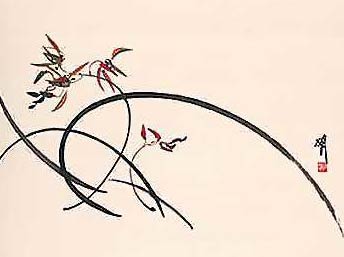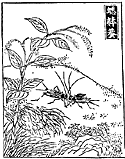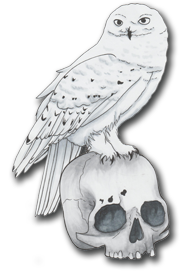Relief Carved Cricket Box
Based on the Tong through Song Dynasties culture, 618-1278 AD.
Project Completed May 21, 2002 (images of completed project not found)
 Crickets were kept both as fighting pets and a source for entertainment through song for many years throughout Chinese culture. Granted, this type of pet was usually participated in by “rich people with too much time on their hands” (Alex Huang, professor, UNCA), but it is to me a fascinating tradition nonetheless.
Crickets were kept both as fighting pets and a source for entertainment through song for many years throughout Chinese culture. Granted, this type of pet was usually participated in by “rich people with too much time on their hands” (Alex Huang, professor, UNCA), but it is to me a fascinating tradition nonetheless.
The Chinese people were, from the earliest records that I have found until the present, a largely agricultural people. This being said, one of the greatest influences that the Chinese people had was that of the patterns within their crops. This would include the weather, the earth itself, herbivorous animals that might feed on the crops, bird, and insects. One of the most fascinating findings that fell in line with the beliefs of the Chinese people was that “the most important ingredient to success in life was to have as many children as possible” according to the research of Jin Xing-Bao. Since the cricket has the ability to lay hundreds of eggs, this may perhaps explain why the cricket was held in esteem so highly.
Farmer’s songs have been found that date back to 1100 BC that also relate to the insect. These songs tell of when the cricket might come indoors, giving good tidings. For example, it is said that if a cricket comes into the house to sing in the month of October, women should make more cloth because the winter is soon to approach.
With the tales of the tradition in place, I began to construct a wooden box to keep a cricket in. I found the Chinese characters for “joy” and “singer” and carved them into the sides of my box. It was my thought that since the cricket would bring luck and happiness to a house, that something that related to the happiness of song would be appropriate. Initially I roughed out the area around the characters with my Dremel tool, more or less etching my way around the characters so that I didn’t do too much damage to the lines of the characters. I then was able to tilt my tool at an angle and begin smoothing out the areas around the characters that I had roughed out, and add a slant to give the relief a bit of form. After the carving itself was complete, I took varying grits of sandpaper and smoothed the areas that were still roughed out. This was a bit of a pain, as the folded sandpaper doesn’t last very long when you are sanding along the fold of the paper itself.
 Next, I toiled over what design to put on the front of the box. I wanted a traditional piece, but had a difficult time finding something that I saw as suitable for carving. Most of the pictures that I could find of traditional wood carving from the orient was too dark, and lost the pleasing appearance of the wood’s grain. It’s quite difficult for me to reproduce an existing piece that I can’t study up close, so I moved on to other traditional designs that I had seen through the years.
Next, I toiled over what design to put on the front of the box. I wanted a traditional piece, but had a difficult time finding something that I saw as suitable for carving. Most of the pictures that I could find of traditional wood carving from the orient was too dark, and lost the pleasing appearance of the wood’s grain. It’s quite difficult for me to reproduce an existing piece that I can’t study up close, so I moved on to other traditional designs that I had seen through the years.
Growing up, I was able to see a few traditional pieces from China that have fetched my mind’s eye. We have family friends that are Chinese, and I remember a few embroidered pieces that Nancy had made, keeping in mind that she (like I) always was overly critical of her own work, down to the smallest detail. In a few of these pieces, I remember birds being a motif, usually sparrows. I sought out a few traditional pieces through the web, and came across a few ideas that I liked. Keep in mind that this is also difficult, as many of the tapestries that were made had writing (top to bottom, not left to right as in English), and accommodated the writing well as they were all vertical pieces. So, I found a sparrow that I could base my piece around, and then added reeds and grass for the bird to perch upon.
I thought that this motif would be fitting, keeping in mind my reading. The birds would have to eat the crickets and other insects through the field in order to keep the balance of nature, and harmony within the field. The sparrow also has one of the loveliest singing voices that I’ve ever known. So now I had my joy, my singer, and my harmony. Through this, I began to carve the perched sparrow on the front of the box using the same methods that I used for the characters.
After completion of carving, I attempted a antique staining process with cherry stain (as cherry is one of the prominent woods that are used throughout the orient) that I thought would bring out the most possible detail in this piece. Unfortunately, the wood itself was too porous for this process and absorbed the stain too quickly to complete the antiquing look. I went ahead and stained this darker with the cherry stain to try and give a unified color that is similar to the cherry wood’s natural appearance.
For the best interests of the cricket, I have left him at home. The drive to the event is going to be quite warm, and I didn’t wish to kill it before I got to the site. To complete the habitat however, I would fill the box with a thin layer of sand, and give the cricket a chunk of a potato for it’s nourishment as well as a sponge with water in it.
Thoughts in Retrospect
This piece was not extremely difficult to make, as I’m getting more accustomed to carving in relief with my tools. I chose not to go with knives, as the box itself is a soft wood. I also chose not to construct the entire box myself, simply purchasing it at Michael’s arts and craft store. The wood itself is soft enough that it allowed for more detail than pine, oak, or the traditional cherry would have. Sanding the detail into this box would have added quite a bit of time, and I would have needed to try out new bits for my Dremel that were strong enough to bore out more material.
This in mind, the box itself is far from scratch made. The decoration of the box is completely done by eye, and the assistance of power tools (I learned from my doll that it is sometimes better to use what is modern in the way of the tools). I would like to (someday) attempt to make a completely scratch made box, but this will only be possible with the expanded space and tools that a workshop can bring. Nonetheless, I enjoyed the carving process (as always) and learned a lot about control of tools and keeping focus on the end result without losing sight of the process that it takes to bring the project to completion.
Constructive feedback is both welcome and appreciated, please let me know if I missed some pertinent information or if there's somewhere I can improve.
As always, thanks for reading!
Ihone
